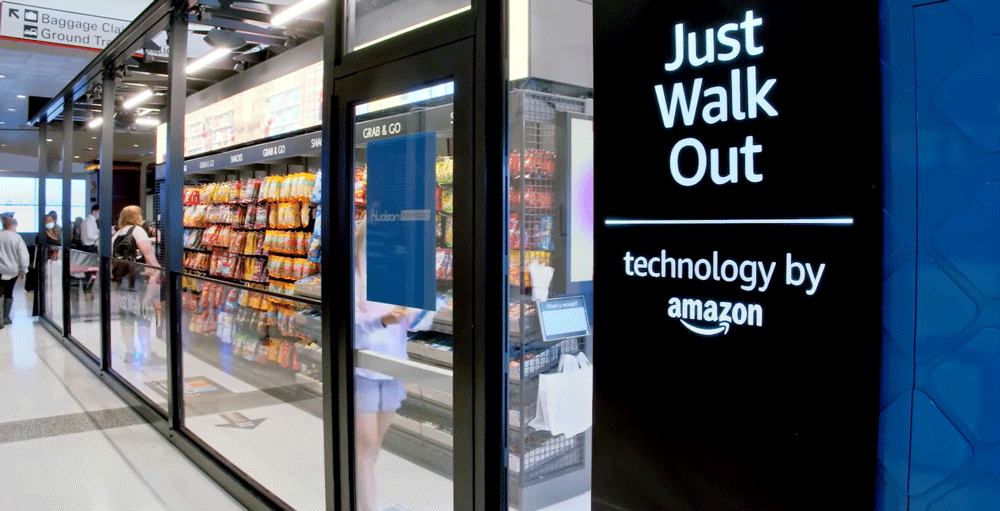The Reality of AI in Retail: Lessons from Amazon’s "Just Walk Out" Technology
Explore the lessons from Amazon's "Just Walk Out" technology with our deep dive into AI's retail applications, operational challenges, and ethical considerations for entrepreneurs.

In recent years, the retail sector has buzzed with the promise of Artificial Intelligence (AI) transforming everyday shopping experiences. Amazon's "Just Walk Out" technology was at the forefront of this innovation, promising a futuristic, cashierless shopping experience. However, the unfolding of this technology offers valuable lessons for entrepreneurs and business leaders looking to integrate AI into their operations.
Understanding Cashierless Technology
The concept of cashierless stores isn't just about reducing labor costs; it's aimed at enhancing customer convenience. Shoppers can theoretically enter a store, pick up their items, and leave without ever interacting with a cashier or manually checking out. The items are automatically added to their digital cart, and their account is charged upon exiting the store.
The Reality Check
Despite its high-tech appeal, Amazon's implementation of this technology faced significant setbacks. The AI, designed to track and charge items automatically, failed to adapt to real-world complexities. This led to a heavy reliance on human intervention, with around a thousand workers in India tasked with monitoring and correcting the system’s outputs.
The AI Learning Curve
The persistent need for human oversight revealed a critical truth: AI and machine learning technologies are incapable of fully autonomous retail operations. The technology's failure to learn and adapt effectively without substantial human input is a stark reminder of its current limitations.
"True technology innovation is not just about flashing new tools; it’s about how these tools are integrated into daily operations to improve efficiency and user experience."
Operational Challenges
Running a cashierless store requires meticulous item placement and inventory management. Any deviation from predefined arrangements can throw off the system, leading to errors and customer dissatisfaction. These operational hurdles underscore the importance of robust system design and testing before full-scale implementation.
Economic and Ethical Implications
Relying on cheaper labor markets for system monitoring raises significant ethical questions. It also reflects a broader economic strategy of cost minimization, which can conflict with ethical labor practices and local labor laws. Entrepreneurs must consider these factors when integrating similar technologies into their businesses.
"Ethics should not be an afterthought in the deployment of new technologies. Instead, they should be at the core of every decision made."
Enhancing Customer Experience
While technology can streamline operations, it should not compromise the customer experience. The initial appeal of AI-driven convenience quickly diminishes if customers face privacy concerns, surveillance discomfort, or poor service due to technological shortcomings.
The Future of Automation in Retail
This scenario serves as a crucial lesson for the future of work, particularly in the automation of the service sector. The balance between technological advancement and job displacement is delicate and demands careful consideration from policymakers and business leaders alike.
"The goal of technology in retail should be to create a seamless and enriching shopping experience, not to replace the human touch with a cold, impersonal system."
Conclusion: A Call to Action for Entrepreneurs
For entrepreneurs looking to innovate, Amazon’s cashierless technology journey is instructive. It highlights the importance of aligning technological capabilities with practical business needs and ethical standards. As we advance, integrating AI into business operations must be done thoughtfully, clearly understanding its limitations and impacts.
Remember, real innovation isn’t just about deploying new technologies—it’s about making them work effectively and ethically in real-world applications. Let this be an inspiration to approach AI integration with caution, thorough planning, and a deep commitment to enhancing both customer and employee experiences.


Checklist: Questions for Aligning Technological Capabilities with Practical Business Needs
Feasibility: Does the technology perform reliably under real-world conditions?
Example: Tesla's autopilot system was extensively tested under various driving conditions to ensure reliability before being released to the public.
User Experience: Does the technology improve or complicate the customer experience?
Example: Apple’s introduction of Face ID improved user experience by making device access more straightforward and secure than traditional passcodes.
Ethical Considerations: Are there any ethical concerns with implementing this technology, such as labor practices and privacy issues?
Example: Google's AI principles commit to avoiding technologies that cause or are likely to cause overall harm, guiding ethical development and deployment.
Operational Compatibility: How well does the technology integrate with existing business operations?
Example: Adobe’s transition to a cloud-based subscription service with Adobe Creative Cloud seamlessly integrated into the workflows of creative professionals, enhancing accessibility and collaboration.
Scalability and Flexibility: Can the technology scale and adapt to changing business needs and market conditions?
Example: Amazon Web Services (AWS) provides scalable cloud infrastructure services that businesses can adjust based on changing needs.
Risk Management: What potential failures could occur, and what contingency plans are in place?
Example: Microsoft Azure offers geo-redundant storage (GRS), replicating data in multiple locations to protect against regional disasters.
Cost-Benefit Analysis: Do the benefits of implementing the technology outweigh the costs?
Example: Netflix’s use of big data analytics for content recommendation and personalization has significantly increased user engagement and retention, justifying its investment.
Long-Term Vision: Is the technology choice in line with the long-term strategy of the business?
Example: LinkedIn’s investment in data science and machine learning to improve its job-matching capabilities aligns with its long-term goal of connecting the global workforce.
Stakeholder Engagement: Have all relevant stakeholders, including employees, customers, and partners, been involved in the decision-making process?
Example: Salesforce regularly engages with its user community through its Trailblazer Community for feedback and ideas, directly influencing product updates and policies.
Continuous Monitoring and Feedback: Are there mechanisms for ongoing assessment and adaptation of the technology based on user feedback and performance data?
Example: Spotify continuously monitors user interaction data to refine its music recommendation algorithms, ensuring they stay relevant and highly personalized.
This checklist and the corresponding examples demonstrate how thoughtful consideration of these questions can lead to successful technology integration that enhances business efficiency, user experience, and strategic alignment.


